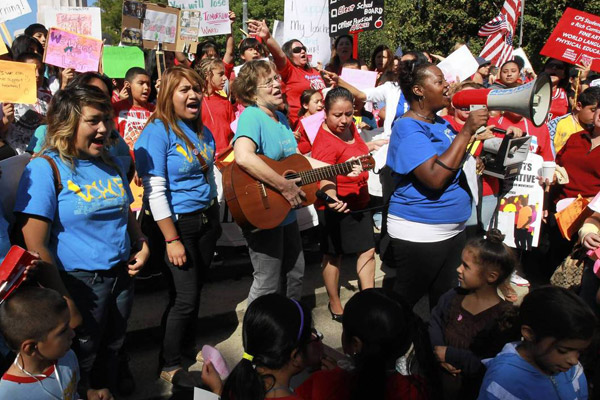
* Yesterday I mentioned Rich Miller's recent poll on the teachers strike, and the substantial demographic split. Today I was browsing the comments at Capitol Fax, and was genuinely surprised that many of Miller's commenters—who tend to be well-informed on local and state issues—were surprised that only nine percent of CPS's students are white:
Wow, some really good insights there Rich, have to admit that 9% was a real surprise, figured it would be at least in the mid 20s….
The numbers don’t lie, and I must admit, they are quite shocking.
Nine percent. . .WOW I haven’t lived in Chicago for more than twenty-five years, but when I did I spent a great deal of time in the public schools. Student populations were heavily minority then, but less than nine percent! Wow
the 9% white enrollment figure is a shock.
Enrollment in the mid-20s would actually be sort of close to the actual demographics of the city itself (a near-even split between black, Hispanic, and white). But what surprised me was not how low CPS's white student population was, it was how comparable it is to other big cities. Chicago is legendarily segregated, but its number on that measure is nearly identical to Houston and Los Angeles, and not that much lower than New York City. That's just how big-city school systems are.
* Dylan Matthews asks: how good is Rahm's case for an injunction? Answer: it's really complicated. And it touches on one reason the whole strike has been complicated:
Decisions to determine class size, class staffing and assignment, class schedules, academic calendar, length of the work and school day with respect to a public school district organized under Article 34 of the School Code only, length of the work and school year with respect to a public school district organized under Article 34 of the School Code only, hours and places of instruction, or pupil assessment policies.
Those are all things the CTU can negotiate via collective bargaining but can't strike over (emphasis his). So the CTU is sort of striking over things they are allowed to strike over but they're minor compared to the things they aren't allowed to strike over—which has made not only the already complicated public discourse over the strike even more so, it makes the injunction complicated as well.
* Speaking of complications, David Moberg brings up yet another point of tension that's not part of the strike but actually is:
But teacher anxiety and hesitation, Lewis said, spring from two sources–their profound distrust of Emanuel and Chicago Public School (CPS) leaders, and their worries about school closings and job security.
"The big elephant in the room is the closing of 200 schools," Lewis said, though CPS does not acknowledge such plans. "It undergirds nearly every thing we've talked about."
WBEZ has a good map of school closures over the past decade. From the beginning of the 2001-2002 school year to this year, CPS lost 30,000 students; the demographics changed from 51 percent black, 36 percent Hispanic, and 9.5 percent white to 42/44/9.
* Rahm talked to the NYT; Karen Lewis to WBEZ.
* This American Life last week revolved around Paul Tough's new How Children Succeed, which in turn has a lot to do with Chicago schools and the research of the U. of C.'s James Heckman.
Photograph: Chicago Tribune


